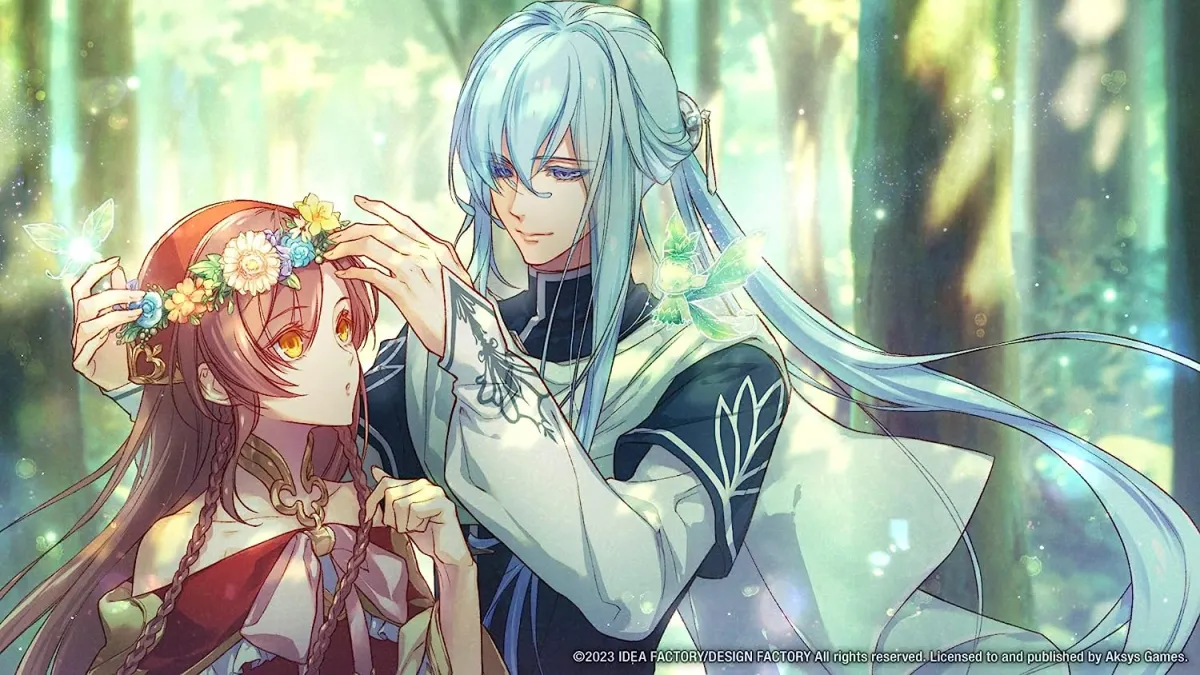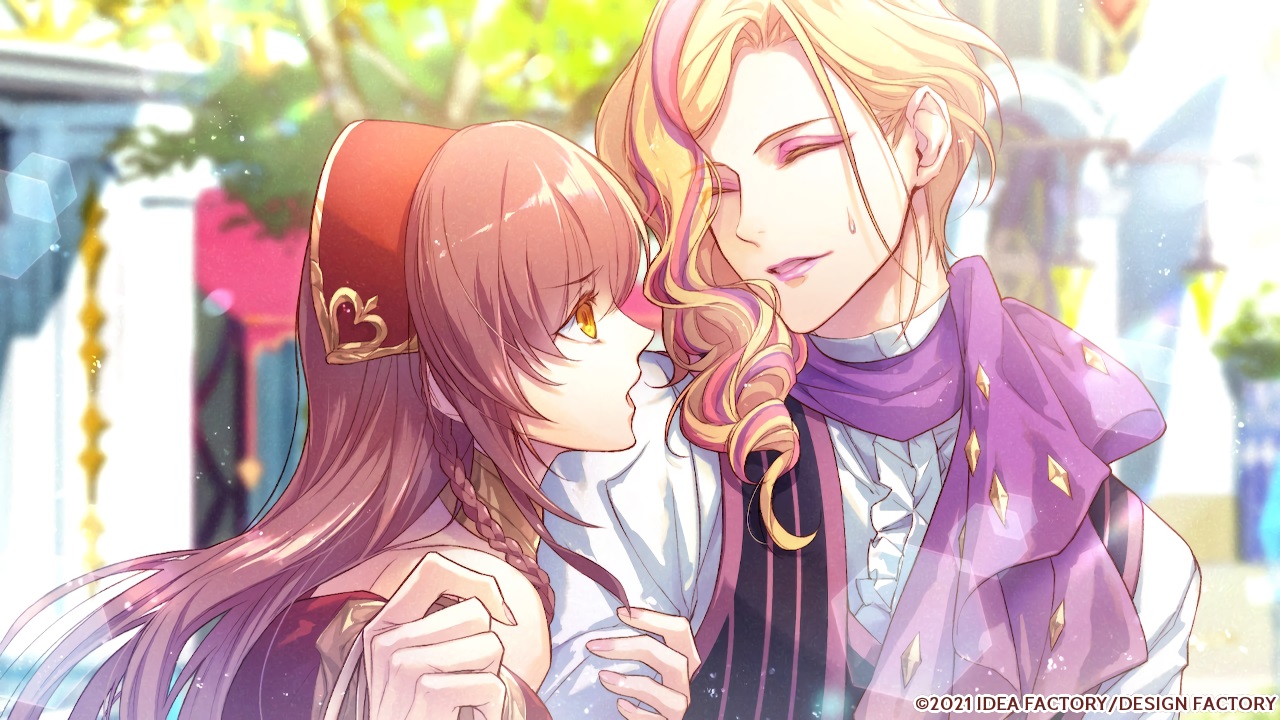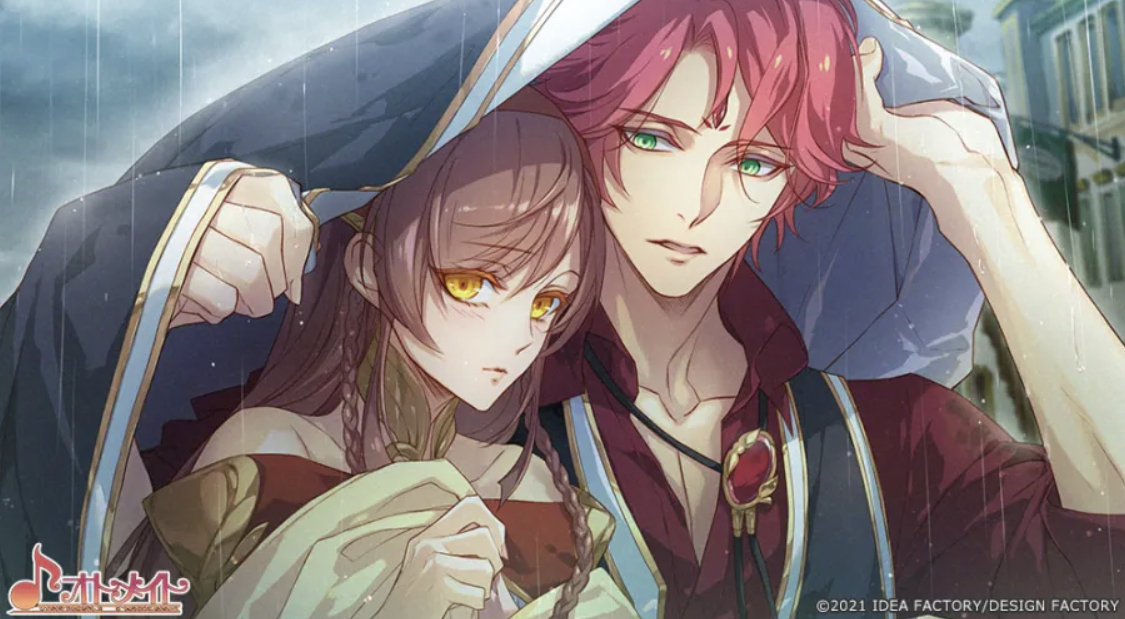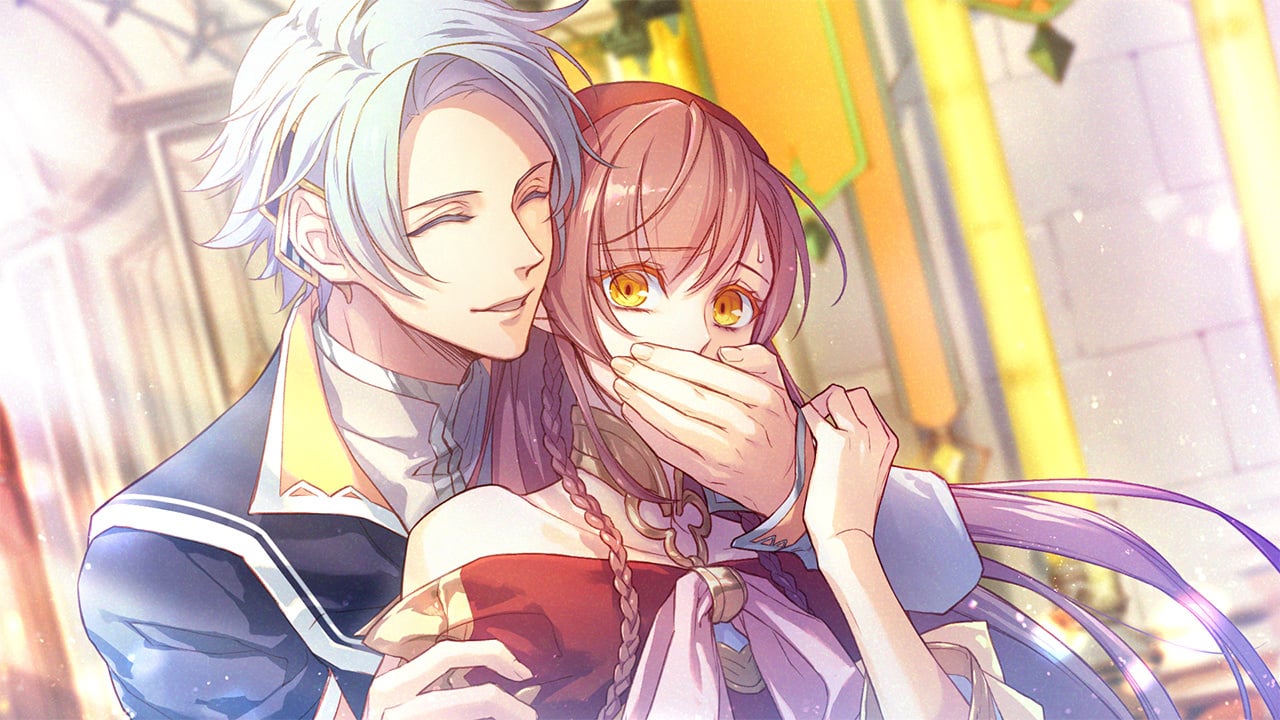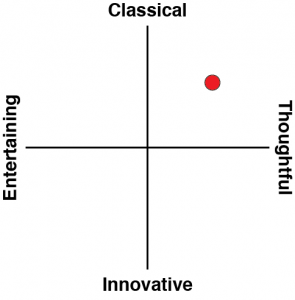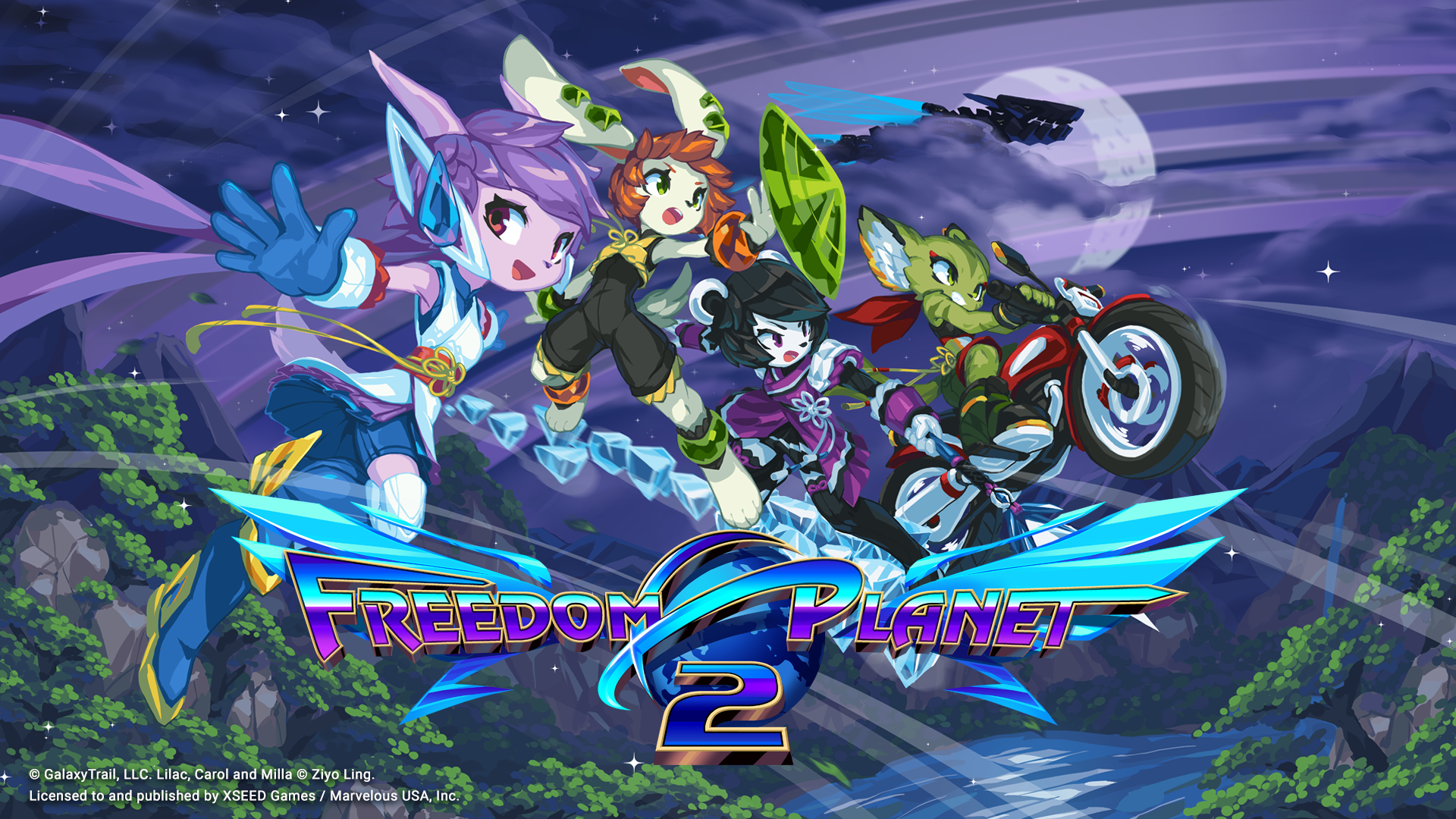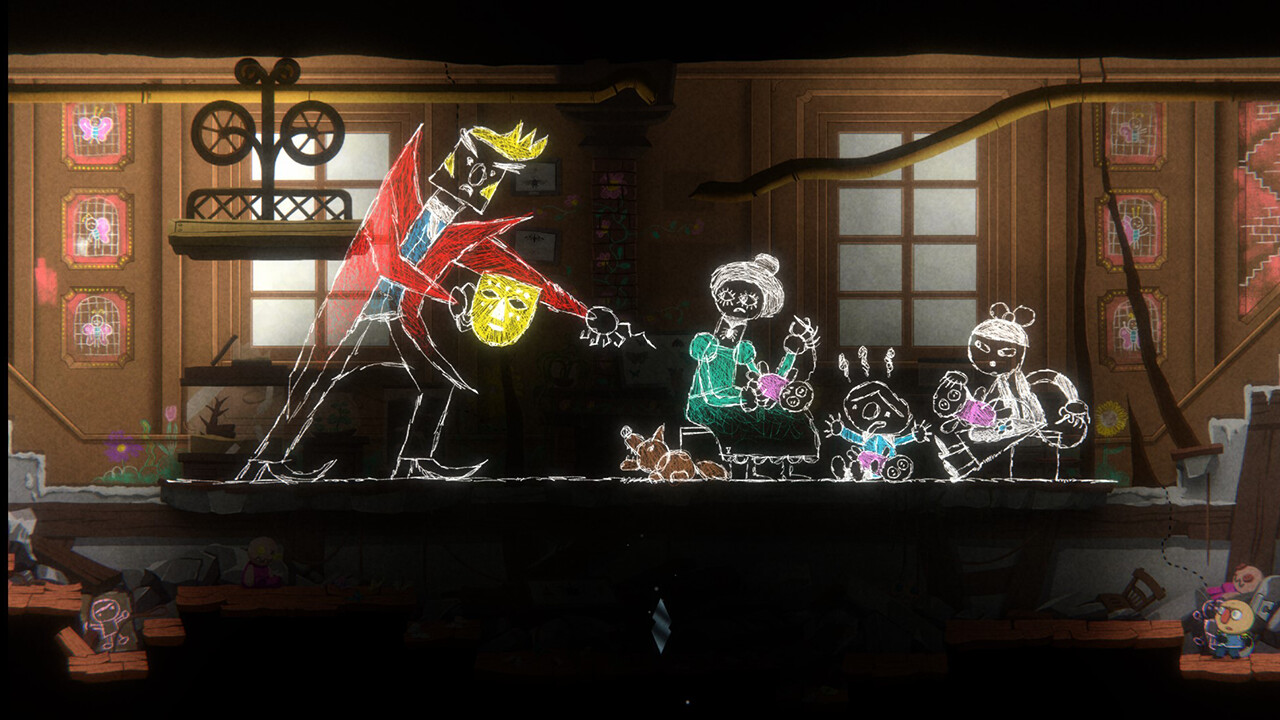I struggle to think of a more consistent developer than Otomate. The Idea Factory otome specialist developer produces games at such a rate that I’m convinced the only reason we don’t get all of them in the West is that the localisers simply can’t work that fast… and that’s a pity, because they’re almost all good, too. With very few exceptions Otomate games combine rich, gorgeous art, unique and interesting settings and characters, and vivid stories of romance, danger, and adventure.
Radiant Tale is one of the better entries in this developer’s exceptional library.
The sense of fantastic, magical whimsy sets a wonderful tone and spirit right from the outset. The heroine of this particular story – the almost perfectly wonderful Tifalia – is recruited into a travelling circus that has a singular mission: to rescue the kingdom’s prince. See, in true fairy tale fashion (but, sweetly, the inverse given that it’s the male that’s the “damsel in distress”), the prince has fallen into a mysterious slumber, and the only way he can be awakened is for the world’s population to experience bliss and happiness together. Tifalia’s asked to join an all-male entertainer’s troupe to act as its manager, and so she ends up travelling the world with an eclectic bunch of stunningly attractive boys and following them in their hijinks, all the while learning a lot about herself on the way.
See, before joining the troupe, Tifalia was a sheltered orphan working in (and content with her lot) the inn that her guardian owns. It’s a simple and humble life, and presented as an idyllic one where Tifalia is looked after well, but she is also largely ignorant of the world as a result, and far too comfortable in that ignorance despite being a bright soul. She needs a push, in other words, and her guardian sees the troupe and their job offer as the perfect opportunity. And so her guardian gives her that one last push, and Tifalia is thrust into a world of high adventure, magic, and even dragons.
It’s a bildungsroman, then, but rather subtle for that narrative genre by video game standards. Usually, the video game approach to bildungsroman is to make the protagonist look and behave like a naïve fool, before rapidly growing up through deadly adversary. With Radiant Tale, Tifalia is already an intelligent and interesting character, just sheltered, and so her journey is more of wonder and experiences rather than hard lessons. There are those too, to an extent, but there’s more nuance to it, and they’re more background than normal. Every time Radiant Tale looks like it might slide into something far more sober and serious, it catches itself and then returns to its incredibly enticing high adventure spirit.
In fact, Radiant Tale is generally written with more nuance and complexity than most other games, even within the VN genre. The overarching story is a combination of romantic growth between the protagonist and whatever boy catches her eye, high magic and fantasy. However, there are darker moments, and each character has a deeper site that takes Tifalia some prying to dig into. But without fail she finds something so compellingly human at each character’s heart that it’s entirely believable that she would fall in love with each of them. This is a cast with no duds, and consequently it’s one of the first times I’ve actually wanted to play an otome game through multiple times just to see how each boy turns out. I generally prefer to play VNs once and then consider that the “canon” arc in my head. However, Radiant Tale in its entirety dazzles as brightly as any of its characters at full flight, and so in this particular case I wanted to take it all in.
It’s also pleasant to have a game about a circus that doesn’t aim for something dark and gritty, if not outright horror. It’s easy to understand why video games veer that way – it’s what the comic books generally do when a circus is involved, and the clown phobia thing is real. But just as the circus is the perfect vehicle to explore the wretched and morally conflicted side of humanity, the aesthetic and theme of the circus also lends itself to the idea of a microcosm of wonder, and highlighting the most extreme and unique qualities of humanity. That’s the side where Radiant Tale falls.
It’s nice to have a visual novel that’s open about warmth and romance as well. So often these otome games have a “bad” ending that really hits like a slap to the face. Often it’s appropriate to the context of the narrative, but sometimes such endings can come across as a weird inclusion that is at odds with the direction that the narrative is otherwise taking. Radiant Tales only has “happy” and “normal” endings, and the writers have taken advantage of that to give players a sense of high adventure and whimsy that feels far more cohesive because there’s never the threat of a horrible ending hanging over these relationships like a Sword of Damocles. Each character has their challenges and baggage, but it’s all very Hallmark in the way it’s resolved each times, with no uncomfortable surprises that will make you wish you didn’t originally like the character in question.
Speaking of the positive attitude, of everything in this game I was most impressed with Tifalia. This is a seriously well-written otome protagonist. She’s determined, intelligent, depicted as having agency and control over her own fate and interests and – most importantly – she’s the one that confesses her interest in whatever boy’s narrative path you’re on. In each and every route, rather than being “swept off her feet” or “allowing herself to be taken,” Tifalia’s the one that takes the romantic initiative.
In terms of presentation, Radiant Tales is right up there with the best of Otomate. The character designs are universally wonderful, and the key art CGs perfectly depict either magical wonder or little moments in the growing romance between Tifalia and her boys. The music captures wonder, fantasy, and spirit of the circus troupe, too. The only issue I have with the presentation is so minor, but I’m scratching for things to criticise: The text font, while readable, doesn’t look integrated into the little dialogue window as it should. The text is just slightly awkwardly “off” with the margins of the window, and while it’s a minor visual issue it does break immersion by drawing too much attention directly to the UI.
When my biggest criticism of a game is “the font isn’t quite right,” I know I’ve played something pretty special. Radiant Tales doesn’t subvert the otome genre. It is not meant to challenge the audience to think deeply about things. It is, simply, a well-written and well-meaning romance story about a troupe of performers and a highly magical adventure they embark on together. It’s like the non-steamy end of Harlequin novels, and there’s nothing wrong with that. Everyone benefits from a little romantic fantasy at times.
